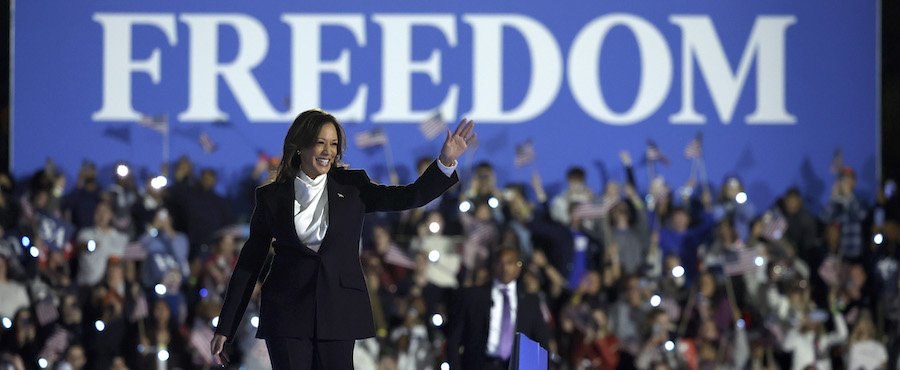YouGov polled seven battleground states – Arizona, Georgia, Michigan, Nevada, North Carolina, Pennsylvania, and Wisconsin – between October 25 - 31, 2024 for The Times and SAY24, a joint project of Stanford, Arizona State, and Yale Universities.
The polls show that among likely voters — defined as registered voters who have already voted, definitely will vote, or probably will vote and also voted in either the 2020 or 2022 election— Vice President Kamala Harris leads by small margins in Wisconsin (4 percentage points), Pennsylvania (+3), Michigan (+3), and Nevada (+1). Trump barely leads in North Carolina (+1) and Georgia (+1). Arizona is tied.
The presidential race in these states has not moved much since early September, when we last polled these states. Harris' vote share has increased by 3 points in Arizona. In all other states, the share saying they'll vote for Harris or Trump either has moved by 1 point or hasn't changed.
In each of the seven swing states, Harris holds an advantage with women while Trump leads among men. The gender gap is somewhat smaller in North Carolina and Wisconsin.
If the leads in these states hold up and the remaining states vote the same way they did in 2020, then Kamala Harris would narrowly win the electoral vote. But both Harris' and Trump's lead in each of the seven states is within the margin of sampling error for the polls.
There are Senate races in Arizona, Michigan, Nevada, Pennsylvania, and Wisconsin this year. In each state a Democrat holds the seat now; two are open races and three seats are being defended by incumbent Democrats.
Democratic Senate candidates are outperforming Harris in her race for president. In each of the five swing states with Senate elections, the Democratic candidate is up by a margin of between 4 and 9 points.
While Democratic Senate candidates still lead in battleground states, their Republican opponents have made minor gains since we last polled in September.
At this late stage in the election, voters who are uncertain about whether they will vote are far more numerous than those who are truly "undecided."
Only 3% of registered voters say they are not sure about which candidate they will vote for, though roughly two-thirds of those express a preference between Trump and Harris on a follow-up question. So when pressed, only 1% are truly undecided, saying they prefer both Harris and Trump equally.
At the same time, 7% of registered voters say they aren't certain they will cast a ballot — 4% say they probably will vote, 2% give it an even chance, and 1% say they probably or definitely will not vote. And 7% likely is below the true proportion of registered voters who are uncertain about voting since the share of voters who say they are sure to vote historically has been higher than turnout.
Methodology: The surveys were conducted between October 25 - 31, 2024 for The Times and the SAY24 project for Stanford, Arizona State, and Yale Universities. The sample size was 900 in Arizona, 1,000 in Georgia, 1,000 in Michigan, 800 in Nevada, 1,000 in North Carolina, 1,000 in Pennsylvania, and 900 in Wisconsin. This sample was weighted according to gender, age, race, and education based on the U.S. Census American Community Survey, and the U.S. Census Current Population Survey, as well as 2020 Presidential vote and 2022 baseline partisan identification. Respondents were selected to be representative of registered voters living in each state. The margin of error for a percentage based upon the entire sample in each state survey is between 3.5% and 4.6%. The margin of error is larger for subsamples and differences of percentages.
Image: Getty












